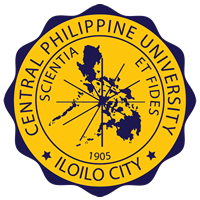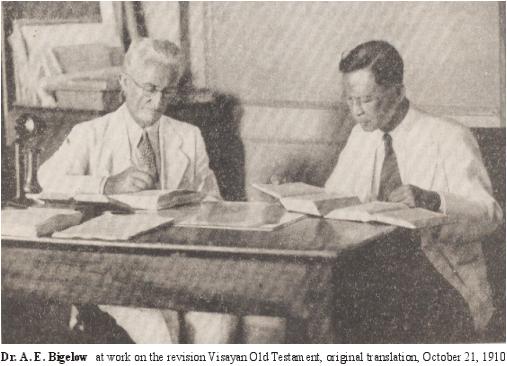By Nestle G. Taala
Finishing a degree means more than just a diploma or a certification. It is one of the most awaited events in the life of every college student to wear a toga and hashtag it as best OOTD (Outfit of the Day) ever!
Some conquer the process with patience, dedication and faith in God; others come with specific and concrete strategies to do well in and survive college life. But whatever schemes an individual uses, to graduate is one of the most fulfilling experiences, knowing that all the sacrifices not just of the graduate, but that of his/her parents/guardians, finally pay off.
During CPU’s Commencement Exercises, students’ efforts are affirmed through various awards. Some of the distinguished awards given by CPU aside from the Latin honors to recognize academic excellence are The Rotary Award for Most Outstanding Graduate, the Dr. and Mrs. Nelson Pomado Leadership Award, Dr. Margen Java Leadership Award, and the Alton Bigelow Alma Mater Award.
According to Rev. F. Neil G. Jalando-on, the Alton Bigelow Alma Mater Award is “the highest award given to an outstanding graduate of CPU who excels not just in the academics but in extra-curricular activities and is actively involved in the area of Christian Ministry especially related to the Convention of Philippine Baptist Churches.” Over the years, remarkable students have been bestowed this honor.
However, what makes this award “the highest award” is the life of Dr. Alton Ezra Bigelow.
Dr. Bigelow was born in Gridley, California on December 3, 1876. After attending public schools in California, he studied at William Jewell College and Shurtleff College in Missouri receiving the degree of Bachelor of Arts from the latter. He received the Bachelor of Divinity at the University of Chicago Divinity School three years later.
He married Miss Marie Christensen shortly after his graduation from college. In 1907, Mr. and Mrs. Bigelow arrived in the Philippines. He was put in charge of evangelism of the Baptist Mission and also served as a faculty member of Jaro Industrial School. Teaching religion and English classes, “he developed a reputation [for] producing students who spoke English with unusual exactness, clarity, and correct articulation.”
As Dr. Bigelow continued his mission work which included being one of the original incorporators of Jaro Industrial School and being in charge of Iloilo Mission Press in 1913 to 1915, Mrs. Bigelow became very ill and died suddenly in a hospital in Oregon in 1916.
In October 1917, Dr. Bigelow married Miss Alice Stanard, a missionary in Negros who was on furlough. A year after, he became the acting principal of Jaro Industrial School until 1922. A few months later, Alice died. In August 1919, he sent his three children to the Home of the Missionary Children, then located Chicago where they lived until each finished high school.
Dr. Bigelow’s notable works include the establishment of the School of Theology in 1926. He became the dean until 1934. He served as Mission Treasurer of the American Baptist Foreign Mission Society for Philippine Mission from 1913-1927, Treasurer of Central Philippine College, and Treasurer of CPC Board of Trustees in 1930-1935.
He also made an outstanding contribution to the Philippines in the field of Visayan grammar and literature in which he was able to produce a Visayan-English, English-Visayan Dictionary. Furthermore, Dr. Bigelow was the editor and manager of Manugbantala, the first Hiligaynon newsletter in the Philippines. Because of this, Dr. Francis Howard Rose pointed out that Bigelow “did much to shape the theology of churches and the opinion of the public on Protestant Churches.”
He was also able to make revisions in the Hiligaynon Bible produced by Rev. Eric Lund and Rev. Braulio Manikan and made collaborations with Mrs. J.A. Hall in preparing an Ilonggo hymnal in two editions: one with musical notation and one with the verses only.
Another significant contribution of Dr. Bigelow is the overall Christian Program in the campus and the organization of “school church” in 1910 wherein the boys themselves could participate in the conduct of the services.
Dr. Bigelow was also always interested in athletics, specifically in playing tennis. In his later years, he was into collecting orchids, shrubs and forest trees. In fact, Dr. Bigelow was responsible for the beautiful travelers’ palm standing majestically at the corner of Roblee Science Hall and the anahaw trees along the road from Lopez Hall to Weston Hall.
In 1935, on the way to Hawaii, Dr. Bigelow died while the ship was still at sea. As per his request, his body was lowered into the waters. His final resting place being the seas between America and the Philippines was a fitting symbol that in his life and ministry, the West met the East.
Many were saddened by the death of Dr. Bigelow since he indeed served as an inspiration through his well-spent life. Mr. Eleuterio Plagata paid tribute to his former instructor, “But Dr. Bigelow was more than a teacher. To us in the older days he was like a father, just and understanding. We called him daddy.”
Mr. Abe S. Gonzales, one of Dr. Bigelow’s pupils and who later became his colleague, quoted Dr. Bigelow as “an inspiring mental and spiritual mentor. He had his opinion that a true Filipino Christian citizen must not only be mentally and physically fit but must be, above all, morally straight.”
All those who had personally known and associated with Dr. Bigelow can certainly testify how they were enthused by him to always run an extra mile. Prof. Melquiades Gamboa of the University of the Philippines even shared, “Few people have put into practice such fidelity to our Lord’s second commandment, ‘Love thy neighbor as thyself.’ Fewer people devoted their lives with so much singleness of purpose to the service of others. What a beautiful expression of sacrificial life we find in him!”
Central Philippine College President, the late Dr. Francis Howard Rose, also expressed his admiration to the ideals of Dr. Bigelow: “I found his counsel sane and workable, constructive and conservative and advice followed usually led to happy solutions of missionary problems. Almost a quarter of century have we been associated in one way or another with the work of the college and we have found Dr. Bigelow a good man to work with ‘down through the friendly years.’”
The medal which is given during recognition day is Dr. Alton Bigelow’s “passion made tangible.” What truly makes an Alton Bigelow Alma Mater Awardee is that one can testify how faithful God is in one’s life in the midst of all the struggles and that one finds joy in serving God, Central Philippine University, and humanity.
However, not just the Dr. Alton Bigelow awardees but all Centralian graduates are groomed to excel in their chosen field and to serve carrying the Central Spirit wherever they are called and planted.
Note:
The writer of this article, Nestle G. Taala, is an Alton Bigelow Alma Mater Awardee in 2017.

